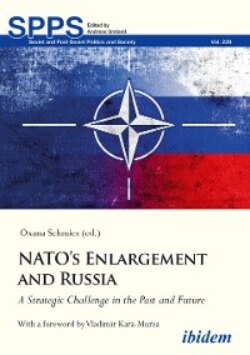Читать книгу NATO’s Enlargement and Russia - Группа авторов - Страница 13
Nuclear Deterrence
A Guarantee or Threat to Strategic Stability?1
ОглавлениеAlexey Arbatov
After thirty years of major reductions in nuclear arsenals to strengthen strategic stability, why are Russia and the United States further diverging in their understandings of the principles of stability? For what reasons, after so many years of joint efforts by the two powers to eliminate incentives for a nuclear first strike against the other, is such a scenario more likely today than at any point over the past thirty years? How is it that, after three decades of successful negotiations on the reduction and nonproliferation of nuclear weapons, the world is entering a period of disintegration when it comes to the entire system of control over these weapons? And, finally, why is the world entering a new cycle of nuclear and related arms races that is both multifaceted and multilateral?
The United States’ withdrawal from the 1987 Intermediate-Range Nuclear Forces (INF) Treaty, Open Skies Treaty and the growing likelihood of the termination of the 2010 New Strategic Arms Reduction Treaty (New START) are returning U.S.-Russia nuclear issues to the forefront of discussions on international security and geopolitics.2
In these discussions, it is difficult to find concepts that are more commonly used—and abused—than strategic stability and nuclear deterrence. Both concepts have a long history. The former has been in official use for nearly thirty years, while the latter has been around for almost seventy. They appear in many state documents and international agreements. Entire libraries of academic literature and propaganda have been written about them, not to mention the reams devoted to both concepts on the Internet, along with oceans of words at countless conferences and symposiums.
Nevertheless, these concepts, their dynamics, and their dialectical interrelationship create new problems time and again. They give rise to paradoxes that, were it not a life-and-death matter for modern civilization, could be considered intellectually fascinating. But, unfortunately, these concepts concern actual matters of life and death. In the current military and political environment, it is no longer inconceivable that war between the United States and Russia could break out in just a few days in the event of a crisis. Such a conflict might culminate with an exchange of nuclear strikes taking as long as just a few hours.
During those hours, hundreds of millions of people in the northern hemisphere would be killed, and everything created by human civilization in the last thousand years would be destroyed. The direct effects would be irreversible, and the secondary effects would likely kill the rest of the world’s population within a number of years, or at least send the remaining population back into a prehistoric existence. The prevention of nuclear war is an indispensable condition for the survival of human civilization, and it is inextricably linked to the concepts of nuclear deterrence, strategic stability, nuclear disarmament, and nonproliferation.
It might seem that all of the above goes without saying, and that all of this has long been accepted both in theory and practice by politicians, military leaders, civilian experts, and the enlightened public of the world’s advanced nations. Over the past three decades, the nuclear arsenals of Russia and the United States have been reduced substantially—both in terms of the number of warheads and in terms of total destructive power. Yet despite all of this, the danger of nuclear war is today much greater than it was in the late 1980s.
In recent literature, much attention has been paid to factors that affect nuclear deterrence and stability from the outside: new missile defense systems, non-nuclear (conventional) high-precision long-range weapons, the influence of third and threshold nuclear states, space weapons, and—more recently—cyber threats.3 These new factors have pushed the core of nuclear deterrence—strategic relations between Russia and the United States—to the background in the public consciousness. Yet dangerous changes are taking place. This article examines the real and imaginary causes of the current situation and suggests potential ways to reduce tensions that could benefit international security.
